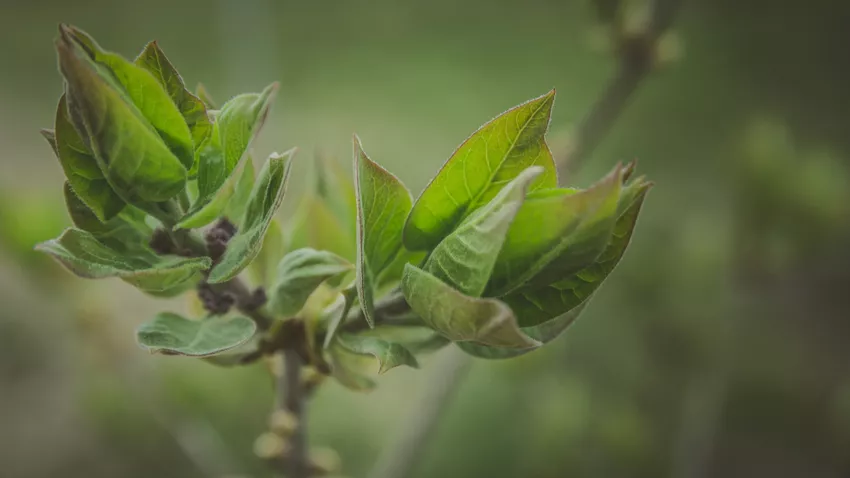- Especially easy. Propagation via root suckers
- Works with almost all varieties: propagation via cuttings
- Rarely successful: propagation of cuttings
- Makes for surprises: Sow lilacs
How and when you best propagate your favorite lilacs depends not only on the method you choose, but above all on the species and variety. Not every lilac variety can be reproduced in every way - depending on the lilac, certain techniques work better, others worse or not at all. In this article we provide you with an overview of common methods and the corresponding instructions.
 The cuttings are cut during the flowering period
The cuttings are cut during the flowering period
Especially easy. Propagation via root suckers
Many lilacs form so-called root suckers, which you simply cut off with a spade in spring or autumn and replant in the desired location. Lilac propagation doesn't work any easier - but it can't be implemented in all species. You can use the method well with the varieties of wild lilac, which forms a lot of root suckers. Noble lilac (e.g. 'Charles Jolie' or 'Remembrance of Ludwig Späth') can develop offshoots, but these are wild forms on which the noble variety is merely grafted. True root offshoots are only found in noble varieties that have been bred using the in-vitro method - however, experience has shown that they only very rarely form.
Works with almost all varieties: propagation via cuttings
If propagation via root suckers is out of the question - for whatever reason - you can take cuttings from almost all varieties and try rooting. Depending on the type and variety, this sometimes works better and sometimes less well, but it can definitely be tested. The propagation of cuttings works very well with dwarf lilacs (e.g. Syringa x meyeri 'Palibin') or the popular Preston hybrids (Syringa x prestoniae), whereas you have significantly more losses with the more sensitive noble lilac. You should be successful if you follow this method:
- Cut the shoots or head cuttings during the flowering period in May / June.
- To do this, select non-woody offshoots with at least three leaf nodes.
- Remove the bottom leaves, leaving only 2-3.
- Halve the remaining leaves.
- Mix the growing soil from lean soil, sand and algae lime.
- Fill small pots with the substrate.
- Put the cuttings in there.
- Moisten the substrate well.
- Put a cut-off PET bottle over it as a greenhouse.
- Alternatively, you can also stick shashlik skewers into the ground
- and put a translucent plastic bag over it.
- The leaves must not touch the plastic, otherwise it will quickly become moldy.
- Place the pots in a bright (but not direct sun!) and warm spot.
- Water and air regularly.
Now you have to be patient: many lilacs take up to a year to develop roots, so that the cuttings often only sprout in the following year.
Rarely successful: propagation of cuttings
If you want to propagate a Chinese lilac (Syringa x chinensis), a Hungarian lilac (Syringa josikaea) or the arched lilac (Syringa reflexa), we recommend the rather uncomplicated propagation using sticks. However, this method is not advisable for the noble lilac varieties, since only very few trees actually grow here - depending on the variety, only every tenth to fifteenth tree actually forms roots. With the species mentioned, however, you can look forward to new young plants after a year. And that's how it works:
- Cuttings are cut in late autumn after the leaves have fallen.
- In contrast to cuttings, these may no longer have any leaves.
- Cut annual shoots about the length of a pencil.
- These should each have a pair of buds below and above.
- At the bottom end, pull off a strip about two centimeters wide from the bark.
- Stick this end into the prepared bed outdoors.
- This should be in partial shade.
- Dig up the soil here thoroughly and enrich it with compost.
- About a third or half of the stick needs to go into the ground.
- Cover the bed with fleece over the winter.
- The following spring you can see which sticks have grown and which have not.
If you don't have a chance to stick the sticks in the fall, you can also wrap them in a clean cloth and store them in the fridge over the winter. Finally, in the spring, they are planted.
Makes for surprises: Sow lilacs
Many lilacs form capsule fruits after flowering, which you can only ripen and finally harvest in autumn. Pour out the fine seeds, carefully separate them from other parts of the plant and sow them straight away in a bowl of potting soil. Leave them outside in a shady and cool place over the winter and only cover them from January. At this point put them in a (unheated) greenhouse and keep the substrate slightly moist, the seeds will soon germinate. The young seedlings are first pricked out in pots in spring and only planted outdoors in autumn. Note that seedling propagation is not monovarietal and you can often experience surprises. If you want to breed your own strains, you'll likely have success with this method.
tips
Lilac is often cultivated via oculation - i. H. the grafting of a shoot on a shoot of the wild species - multiplied. In contrast to the in vitro propagation that is more commonly used in professional horticulture, you can carry out this method yourself at home.